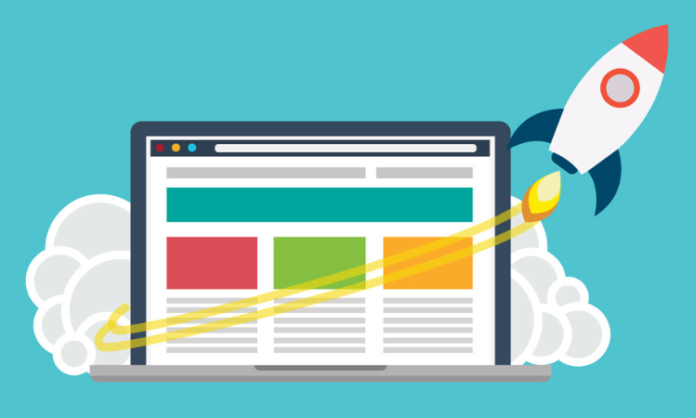Table of Contents
Website speed optimization is the process of improving a store’s loading speed. It shows how quickly a page element appears on the user’s browser. Search engines like Google prioritize websites that load quickly and provide users with exceptional service.
It makes it essential for your ecommerce website to load instantly. A fast-loading store not only improves user experience but also ranks high on search engine result pages, reducing bounce rate, high click-through rate, and more.
There are multiple things that impact a store’s loading speed, such as poor architecture, too many third-party apps, your store’s e-commerce platform, hosting provider, and many other factors. To identify your store loading speed, you can use tools like Google PageSpeed Insights, GT Metrix, and Pingdom.
To enhance your store loading speed, you have to get known with multiple strategies. Also, to avoid any issues, you can get help from an Ecommerce speed optimization expert who provides this kind of service. Thus, here, in this blog, we will explore multiple speed optimization techniques.
9 Ways To Optimize Ecommerce Store Loading Speed
Certainly, these are the ways to improve store loading speed.
Add A Content Delivery Network (CDN)
Content deliver network, CDN in short, is a way to provide your website content to the user from the server closest to their network. With the website becoming a global site, CDN is an effective technique to improve store loading speed with no extra cost.
Compress, resize, and reduce images
Each ecommerce webpage contains 10 to 15 images or videos. Every image creates an HTTP request that increases the server loading time. To fix this issue, use a tool like Tinypng to compress the size of your website images without affecting their quality. Additionally, look at your image empty code that creates extra burden.
Reduce redirects and broken links
Adding multiple redirects and broken links can significantly impact store loading speed. You have to do some cleaning in your store and remove the redirects. Redirects that show that the page is empty or removed hamper the SEO of the website. Thus, eliminate them and remove them from your shop. Additionally, reduce the broken links. Also, you can use a tool like Broken link Checker that identifies the broken links and makes it easy for you to remove them.
Manage your tracking efficiently using Google Tag Manager
Collecting and tracking consumer data is an essential task for your ecommerce business. In digital marketing, analyzing your consumer behavior is vital. However, adding JavaScript tags impacts the loading speed of your store. With Google Tag Manager, your website data will be combined into a single file that reduces the burden and provides details on user interaction and other metrics.
Allow the browser to run scripts without being blocked by parsers.
Each time a user accesses your website, it has to go through the process called parsing the HTML. But parsing blocking scripts impacts website loading speed, as it solely focuses on running those scripts without loading the other elements. After making certain changes to the code, you can improve the loading speed with performance optimization.
Implement lazy loading
Lazy loading is a strategy to show the important elements of a website first, then the rest. Stores that add lazy loading show the overall content to users when they hit the trigger. In this, when the user calls on the website, the title, introduction, and index come first. When the user scrolls down, the rest content starts appearing. Social media posts, user-generated content, videos, and other things load late to prevent site speed with excessive codes.
Utilize lightweight video embeds
Adding videos to your website improves its quality, but you have to be careful that adding standard embed code for YouTube videos makes your website bloated and heavy. Thus, add a video link that opens on your webpage and fits all screen sizes. It doesn’t show in mobile size on desktop. Lightweight video embedding can reduce the website loading time.
Reduce the prominence of homepage hero sliders
Showing your website product images and details in a slide show is an effective technique. It looks good. But it can increase the website loading time by 5 to 6 seconds if you have 4 to 5 slides. Thus, reduce the slides on your site or eliminate them completely and create a single well-crafted CTA page to show. Rather than auto-rotating slides, show products in static content sections.
Eliminate unwanted popup notifications
Popups are a way to communicate with visitors, but too many can impact the site speed. Whether it is redeeming coupons or email addresses, popups are the way to engage with your consumers. You have to set a parameter to show the popup, as too many can hamper the performance of the store.
Conclusion
Thus, these are the techniques to optimize website loading speed. Additionally, getting help from professionals is the right choice to eliminate any delay in the process. You can hire e-commerce speed optimization experts such as MakkPress Technologies, a well-known speed optimization and conversion rate optimization expert. MakkPress Tehcnhplogies has a team of professionals and has been running in this field for more than 10 years.
Consequently, by following the techniques mentioned above, you can improve your eCommerce store performance and loading speed.
Also Read – A Complete Guide Why to Choose Bitdefender Antivirus Software?


